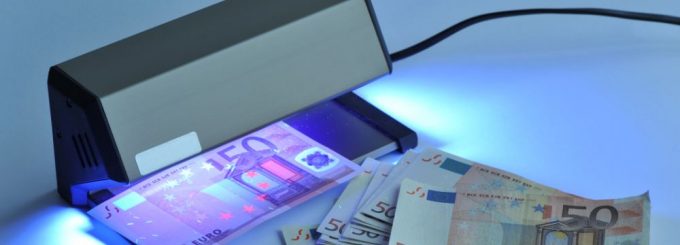How Holograms Protect Banknotes

Counterfeiting is as old as civilization itself, and governments and currency collectors around the world must stay updated on the latest technological trends to remain ahead of the bad guys, and one of the newest are holographic banknotes. Learn more about using holograms in banknotes today!
What Is a Hologram?
A hologram is an object which is made through the usage of holography, which allows wavefront recording and subsequent reconstruction. It is most famous for its ability to produce 3D images, but has additional applications. To produce a hologram, a secondary wavefront (which is referred to as a reference beam) will be superimposed on a primary wavefront, resulting in the interference pattern that is recorded within the physical medium. If only the 2nd wavefront illuminates an interference pattern, diffraction will occur to reproduce the original. Holograms may also be generated by computer via modeling dual wavefronts and then combining them digitally.
Why Holography Is Being Applied To Banknotes
Counterfeiters around the world are in a constant race to develop fake banknotes which mimic authentic ones, and due to the advent of computers, the internet, and advanced printing technology they have more tools at their disposal than ever before. This has given them a new sophistication which potentially threatens governments who fail to remain up to date on the latest technological developments.
Holograms provide a number of key advantages. The first of these are metallic reliefs on the surface, along with color shifting style motifs and even animation, which are created with tools such as micro mirrors as well as coating which is multilayered. Due to the delicate nature of this technology and the national security implications that come from its development, the exact methods used to produce such holograms have not been made available to the public.
What is known is that many of these small and large sized notes use a photopolymer based holographic patch, which is capable of a vibrant color change whenever it is rotated 180 degrees. While banknotes around the world have traditionally been made from paper, many countries are now switching to polymers that use clear coloration and which are contrast designed for enhanced security.
Is It Possible To Fake Holograms?
While anything is possible, faking holograms is extremely difficult, for many reasons. The techniques used for generating holograms is complex and involves the scattering of light from objects, which is then showcased three dimensionally. It takes many years of experience and skill to produce holograms not to mention the equipment, which is costly. Furthermore, the holographic industry is constantly developing new ways to make hologram copying even more difficult.
Aside from banknotes, holograms can be used in other sectors where counterfeiting and fraud are common, such as the banking, electronics and fashion industry. While many financial transactions these days are being conducted digitally, a substantial portion of global payments are still done in cash and this is unlikely to change for the foreseeable future. Currency and coin collectors must also be sure that the products they order are genuine, and holograms are well suited to the task.


